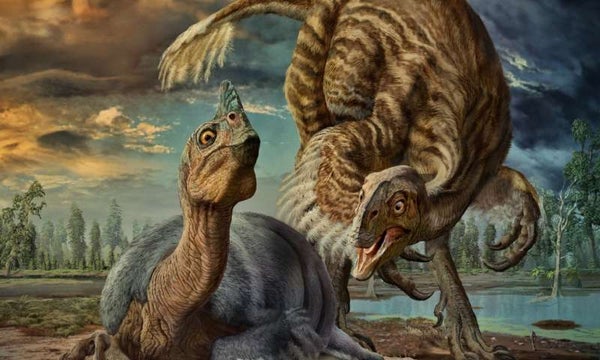This article was published in Scientific American’s former blog network and reflects the views of the author, not necessarily those of Scientific American
On supporting science journalism
If you're enjoying this article, consider supporting our award-winning journalism by subscribing. By purchasing a subscription you are helping to ensure the future of impactful stories about the discoveries and ideas shaping our world today.
The Dinosaur Renaissance was one of the greatest moments in vertebrate paleontology. Dinosaurs went from being sluggish peabrains who deserved extinction to vibrant, complex animals that could teach us new lessons about evolution and extinction. The wave of scientific and public interest crested in a way not seen in decades. But all the Mesozoic attention had a dark side. During the 80s and 90s, dinosaur fossils became must-have collector’s items for the rich, and that’s what led to the black market sale of a clutch of massive eggs found in China’s Henan Province.
Dinosaur eggs are relatively rare fossils to start with, but the clutch from Henan was extra special. Nestled among the eggs were the bones of a baby dinosaur skeleton, all curled up snug. This represented an unprecedented opportunity to match eggs with the dinosaur species that laid them, but first the fossil needed to go home.
From the black market, the block wound up in a private collection and was later purchased by the Indianapolis Children’s Museum in 2001. That’s where “Baby Louie” and his unhatched nestmates stayed until 2013, when they were finally sent home to the Henan Geological Museum in China. And now, after all that moving and shaking, paleontologist Hanyong Pu and colleagues have finally determined the identity of the dinosaur who laid those eggs 90 million years ago.
Previous analyses named the eggs Macroelongatoolithus. (Dinosaur eggs, much like the animals themselves and the tracks they make, get their own names.) And even then, the sheer size of the embryonic skeleton suggested that Baby Louie was some kind of giant oviraptorosaur. The announcement of Gigantoraptorin 2007 was enough to confirm that these beaky dinosaurs could indeed grow to immense size. But the embryonic dinosaur itself represents something new. Pu and coauthors have named it Beibeilong sinensis, China’s baby dragon.
Giving Baby Louie a new species name is a bit of an unusual move. Paleontologists usually try to avoid establishing new names on the basis of immature individuals. That’s because non-avian dinosaurs changed dramatically as they grew up, and sometimes “new” species turn out to be the babies or juveniles of animals already known from adults. Still, Pu and colleagues propose, the details of Baby Louie’s little bones show enough differences from other oviraptorosaurs to establish it as something new.
Baby Louie, as well as the other Beibeilong infants, would have had a lot of growing up to do. Although large by dinosaurian standards, the eggs were only about 15 inches long. The body size of the adult, meanwhile, is estimated by Pu and colleagues to have been comparable to Gigantoraptor – weighing in at over a ton and a half.
But there’s more to the find than exceptional size. All in one place, paleontologists have fossil eggs, remnants of a fossil nest, and the skeleton of the species responsible all in one place. This allowed the experts to sift through behavior and biology as well as systematics.
The adult Beibeilong made a ring shaped nest that likely had many more eggs than the 6-8 preserved in the fossil. These were deposited in two layers, like some other oviraptorosaurs. In fact, Pu and coauthors write, this large species nested in much the same way of its smaller counterparts, raising the possibility that grown up Beibeilong brooded over their nests with spread arms just like their comparative diminutive relatives. What tragedy befell the nest and ended the life of the young inside those shells, we may never know. But that unfortunate turn of events preserved something of the life of animals we’ll never see in the flesh, a frozen moment of Cretaceous time.
Reference:
Pu, H., Zelenitsky, D., Lü, J., Currie, P., Carpenter, K., Xu, L., Koppelhus, E., Jia, S., Xiao, L., Chuang, H., Li, T., Kundrát, M., Shen, C. 2017. Perinate and eggs of a giant caenagnathid dinosaur from the Late Cretaceous of central China. Nature Communications. doi: 10.1038/ncomms14952
